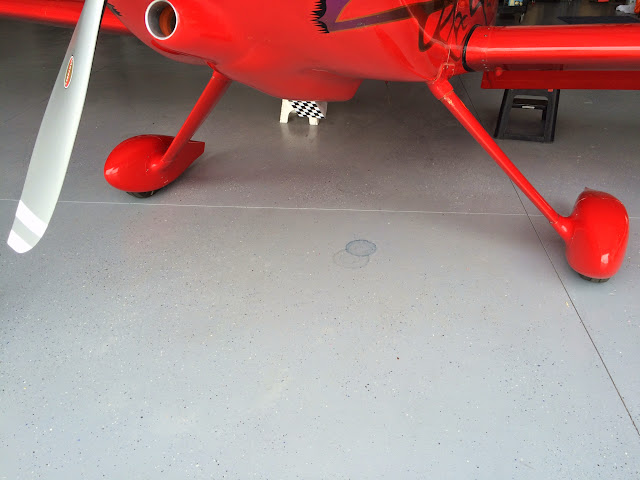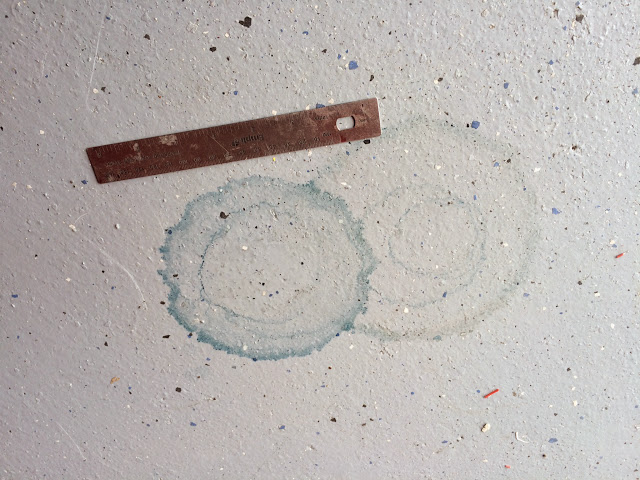RV7A, IO-375, Cold air horizontal induction, Precision/Eagle injection system came with the engine from Aerosport.
Around 5 to 10 minutes after shutting down, the tube coming from the sniffle valve will begin dripping fuel, sometimes with oil in it, on the ground making about a 6" diameter blue circle. This gets embarrassing when you visit someone and they have to run after a drip pan to protect their nice clean concrete pad in front of their hangar as happened to me this last weekend. Sorry Rosie!
I have talked to Precision Airmotive, Aerosport, at Don and AFP about this problem. I have tried the suggested shut down method where I run the engine up to around 1500 RPMs before shutting down, then pull throttle back to idle and quickly follow that with mixture back to idle cutoff. This is supposed to clear out the excess fuel in the intake tubes. This did not help.
I do get a good clean engine shut down when pulling the mixture back to idle cutoff.
I understand that the mechanical fuel pump will pump an extra stroke when the engine is shut down, and this fuel just flows through the system and into the intake ports above the intake valves.
On the cold air horizontal intake manifold this fuel will collect right at the sniffle valve and flow out on the ground. On a vertical injection system, this same fuel might be flowing out the servo, pooling in the air filter box rather than out on the ground.. Can anyone verify this?
At the ice cream social fly in last weekend my RV was the only one out of 40 plus RVs that was dribbling fuel on the ramp. Gotta fix it.
Installing a purge valve from AFP is a potential solution to the problem and my airplane is already plumbed with a full return fuel system so the plumbing changes would be pretty easy. I might also benefit from other aspects of adding the purge valve, like hot starts etc. But, before shelling out the cash for the valve and cable and the work involved etc. I wonder if there are other solutions to consider? Has anyone had this problem and solved it another way?
Anyone have a purge valve laying around they would like to sell?
Ideas and experiences with this situation would be appreciated.
Randall in Sedona
Around 5 to 10 minutes after shutting down, the tube coming from the sniffle valve will begin dripping fuel, sometimes with oil in it, on the ground making about a 6" diameter blue circle. This gets embarrassing when you visit someone and they have to run after a drip pan to protect their nice clean concrete pad in front of their hangar as happened to me this last weekend. Sorry Rosie!
I have talked to Precision Airmotive, Aerosport, at Don and AFP about this problem. I have tried the suggested shut down method where I run the engine up to around 1500 RPMs before shutting down, then pull throttle back to idle and quickly follow that with mixture back to idle cutoff. This is supposed to clear out the excess fuel in the intake tubes. This did not help.
I do get a good clean engine shut down when pulling the mixture back to idle cutoff.
I understand that the mechanical fuel pump will pump an extra stroke when the engine is shut down, and this fuel just flows through the system and into the intake ports above the intake valves.
On the cold air horizontal intake manifold this fuel will collect right at the sniffle valve and flow out on the ground. On a vertical injection system, this same fuel might be flowing out the servo, pooling in the air filter box rather than out on the ground.. Can anyone verify this?
At the ice cream social fly in last weekend my RV was the only one out of 40 plus RVs that was dribbling fuel on the ramp. Gotta fix it.
Installing a purge valve from AFP is a potential solution to the problem and my airplane is already plumbed with a full return fuel system so the plumbing changes would be pretty easy. I might also benefit from other aspects of adding the purge valve, like hot starts etc. But, before shelling out the cash for the valve and cable and the work involved etc. I wonder if there are other solutions to consider? Has anyone had this problem and solved it another way?
Anyone have a purge valve laying around they would like to sell?
Ideas and experiences with this situation would be appreciated.
Randall in Sedona








